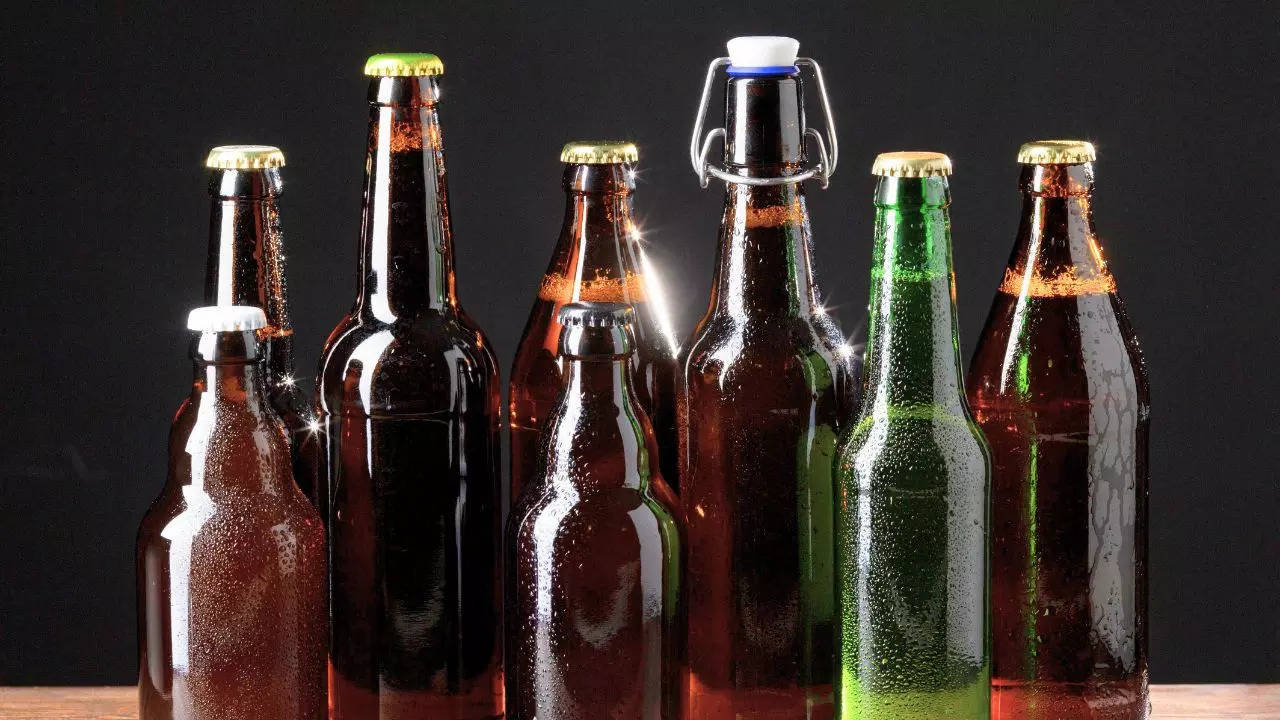Table of Contents

Since the time of the Ancient Egyptians, beer has been a thirst quencher and mood lifter and even today studies say around 192.1 kilolitres of the beverage is consumed every year. But when you crack open a cold beer, how often do you actually think about the packaging that it comes in? Sure we all have a general understanding that beer in cans and in bottles behave differently, but the choices behind these containers aren’t all just about aesthetics, it has a direct impact on the flavour. Not only do the shape, size and thickness of the bottles impact the way your beer tastes but the colour of the bottles do too, and it all began when beers went from being drunk from jars in Ancient Sumeria to the glass bottles we know today.
A Brief History Of Beer Bottle Shapes
In the early 1700s beer bottles were blown from thick dark glass and sealed with corks, similar to wine bottles. But as brewing techniques evolved, so did the bottles. By the end of the 18th century, the typical short-necked bottles we know as porter bottles were born. By the mid-1800s the invention of larger evolved the shape again to ones with longer necks and sloped ‘shoulders’. In the 19th century distinct bottles shapes popped up, such as the German wheat (Weiss), squat porter, and long-necked export, with stoneware bottles also in use despite their weight and closure issues, which led to their decline by the century's end. Modern bottle shapes developed mainly in the 20th century, with short-necked "stubbies" and "steinies" emerging in America in the 1930s as a response to the growing popularity of beer cans. In Britain, brewers favoured the brown glass "London Brewers' Standard" bottles in pint, half-pint, and nip sizes, while glass "growlers"—introduced by an American microbrewer in 1989—enabled consumers to take draft beer home.
Beer Bottles And Their Colours
Beer makers discovered a significant problem with clear glass bottles: sunlight exposure caused the beer to develop an unpleasant aroma and flavour. This phenomenon, known in brewing circles as "lightstruck," occurs when ultraviolet rays interact with the beer. The solution was simple but effective – brown bottles, which acted like sunglasses for beer, protecting the precious liquid from harmful UV rays.
During World War II, an unexpected twist emerged. The scarcity of materials needed for brown glass production forced brewers to adapt. Rather than reverting to clear bottles, they opted for green glass as an alternative. This choice inadvertently created a perception of premium quality among consumers, who began associating green bottles with superior beer. However, green glass offered less UV protection than brown bottles, making it a less practical choice. Despite this drawback, many breweries had invested so heavily in their green bottle branding that changing back proved challenging – the colour had become an integral part of their brand identity.
Also Read: Brew Your Own Beer At Home Like A Pro With These 8 Tips And Tricks
Brown Or Amber Bottles
Brown glass bottles have emerged as the definitive standard in beer packaging, representing the pinnacle of beverage protection technology in the brewing industry. Their dominance isn't merely a matter of tradition but is firmly rooted in scientific principles and practical application. The dark amber colouring serves as a sophisticated natural filter against harmful ultraviolet radiation, blocking approximately 98% of the wavelengths most damaging to beer's chemical stability. This exceptional protective quality prevents the formation of 3-methyl-2-butene-1-thiol (MBT), the notorious compound responsible for what beer enthusiasts refer to as "skunky" flavour. The importance of this protection cannot be overstated, as it preserves not only the basic quality of the beer but also maintains the complex hop aroma profiles and essential volatile compounds that contribute to each brew's distinctive character.
Green Glass Bottles
Green glass bottles tell a compelling story of brewing heritage and marketing evolution, particularly within the European beer tradition, though their popularity comes with notable compromises in beer preservation quality. These distinctive bottles gained prominence during historical glass manufacturing shortages and subsequently became powerful symbols of premium imported beers in many markets worldwide. However, the technical limitations of green glass present significant challenges for brewers and distributors alike, as this material filters only about 75% of harmful light wavelengths, leaving beers considerably more vulnerable to photo-oxidation reactions than their brown-bottled counterparts. This increased susceptibility to light damage results in more rapid development of off-flavours and notably shorter optimal shelf life, typically lasting only 3-4 months under ideal conditions. Despite these technical disadvantages, green bottles maintain their market presence through strong brand associations and distinctive visual appeal, particularly in premium and import segments. This marketing strength has led many brewers to adapt their distribution and storage practices, implementing more rigorous handling procedures and stricter inventory management systems to compensate for the bottles' inherent limitations. The result is a complex balance between traditional presentation and modern brewing science, where the iconic green bottle continues to serve specific market niches while requiring additional care throughout the supply chain to maintain product quality.

